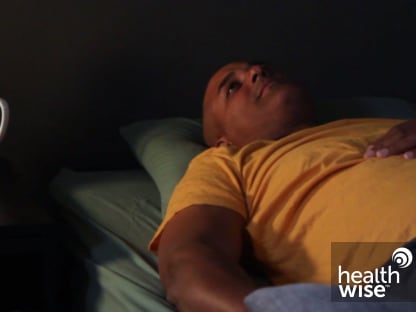Laparoscopic Gallbladder Removal Surgery for Gallstones
Surgery Overview
Laparoscopic gallbladder surgery (cholecystectomy) removes the gallbladder through several small cuts (incisions) in the belly. The surgeon inflates your belly with air or carbon dioxide in order to see clearly.
The surgeon inserts a lighted scope attached to a video camera (laparoscope) into one incision near the belly button. The surgeon then uses a video monitor as a guide while inserting surgical tools into the other incisions to remove your gallbladder.
Before the surgeon removes the gallbladder, you may have a special X-ray procedure called intraoperative cholangiogram. It shows the anatomy of the bile ducts.
The surgery usually takes 2 hours or less. You will need general anesthesia.
After surgery, bile flows from the liver (where it is made) through the common bile duct. It then flows into the small intestine. Without a gallbladder, the body can no longer store bile between meals. In most people, this has little or no effect on digestion.
In 5 to 10 out of 100 laparoscopic gallbladder surgeries in the United States, the surgeon needs to switch to an open surgery that requires a larger incision.footnote 1 This can happen when there are problems such as unexpected inflammation, scar tissue, injury, and bleeding.
What To Expect
You may have gallbladder surgery as an outpatient, or you may stay 1 or 2 days in the hospital.
Most people can return to their normal activities in 7 to 10 days. People who have laparoscopic gallbladder surgery are sore for about a week. But in 2 to 3 weeks they have much less discomfort than people who have open surgery.
Watch
Why It Is Done
Laparoscopic gallbladder surgery is the most common method to remove a diseased gallbladder.
This surgery is used most often when no factors, such as scar tissue from previous belly surgeries, are present. If you have factors that may complicate laparoscopic surgery, your doctor may choose to do an open surgery.
Learn more
How Well It Works
Laparoscopic gallbladder surgery is generally safe and effective. Surgery removes a diseased gallbladder and gets rid of gallstones. It does not remove stones in the common bile duct. Gallstones can form in the common bile duct years after the gallbladder is removed. But this is rare.
Risks
The overall risk of laparoscopic gallbladder surgery is very low. The most serious possible complications include:
- Infection of an incision.
- Internal bleeding.
- Injury to the common bile duct.
- Injury to the small intestine by one of the tools used during surgery.
- Risks of general anesthesia.
Other uncommon complications may include:
- Gallstones that remain in the abdominal cavity.
- Bile that leaks into the abdominal cavity.
- Injury to blood vessels in the belly, such as the major blood vessel carrying blood from the heart to the liver (hepatic artery). This is rare.
- A gallstone being pushed into the common bile duct.
- The liver being cut.
More surgery may be needed to repair these complications.
After gallbladder surgery, some people keep having belly symptoms, such as pain, bloating, gas, and diarrhea (postcholecystectomy syndrome).
Credits
Current as of: October 1, 2025
Author: Ignite Healthwise, LLC Staff
Clinical Review Board
All Ignite Healthwise, LLC education is reviewed by a team that includes physicians, nurses, advanced practitioners, registered dieticians, and other healthcare professionals.
Current as of: October 1, 2025
Author: Ignite Healthwise, LLC Staff
Clinical Review Board
All Ignite Healthwise, LLC education is reviewed by a team that includes physicians, nurses, advanced practitioners, registered dieticians, and other healthcare professionals.




